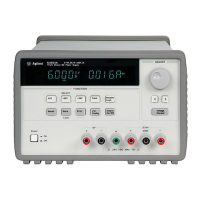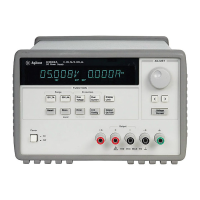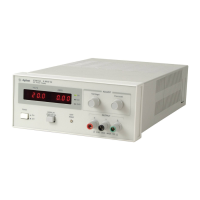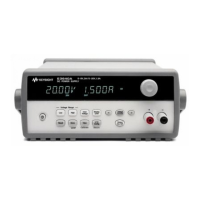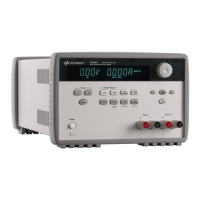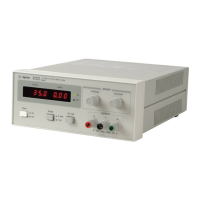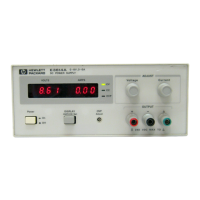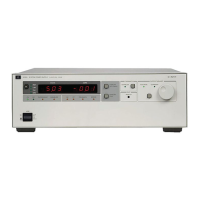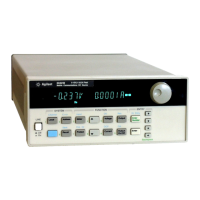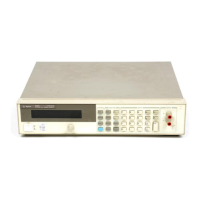Chapter 3 Calibration Procedures
Constant Voltage (CV) Verifications
53
3
CV Source effect (Line Regulation)
This test measures the change in output voltage that results from a change in
ac line voltage from the minimum value (10% below the nominal input voltage)
to maximum value (10% above the nominal input voltage).
1 Turn off the power supply and connect a digital voltmeter between the (+) and
(-) terminals of the output to be tested as shown in Figure 3-1.
2 Connect the ac power line through a variable voltage transformer.
3 Turn on the power supply. Select the 20V/10A* or 50V/4A** range, enable the
output, and set the display to the limit mode. When the display is in the limit
mode, program the current to the full rated value (10.0 A)* or (4.0 A)** and the
voltage to full rated value (20.0 V)* or (50.0 V)**.
4 Operate the electronic load in constant current mode and set its current to
(10.0 A)* or (4.0 A)**. Check that the
CV annunciator remains lit. If not lit,
adjust the load so that the output current drops slightly until the
CV
annunciator lights.
5 Adjust the transformer to low line voltage limit (104 Vac for nominal 115 Vac,
90 Vac for nominal 100 Vac, or 207 Vac for nominal 230 Vac). Record the output
reading on the digital voltmeter.
6 Adjust the transformer to high line voltage (127 Vac for nominal 115 Vac, 110
Vac for nominal 100 Vac, or 253 Vac for nominal 230 Vac). Record the voltage
reading on the digital voltmeter. The difference between the digital voltmeter
readings in steps (5) and (6) is the CV line regulation. The difference of the
readings should be within the limit of (4 mV)* or (7 mV)**.
*For Agilent E3633A Model **For Agilent E3634A Model
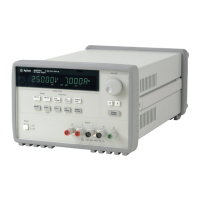
